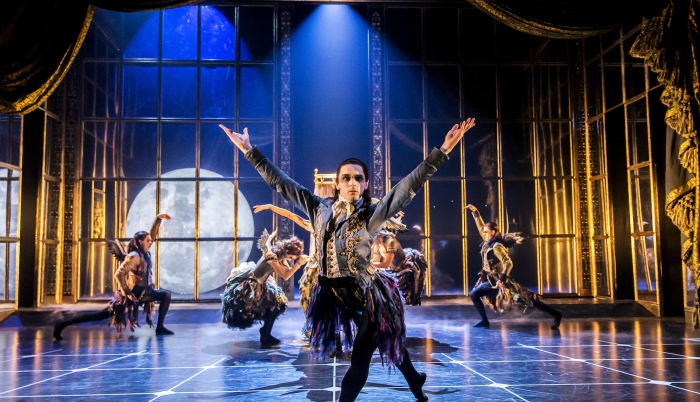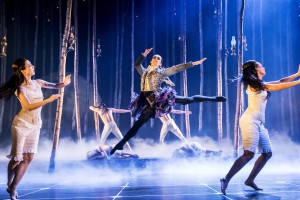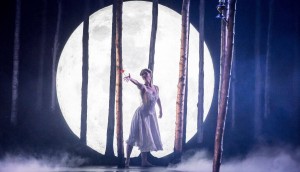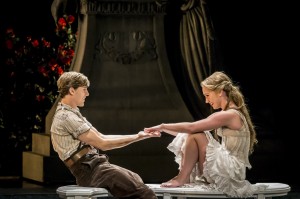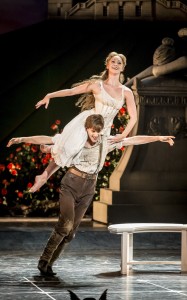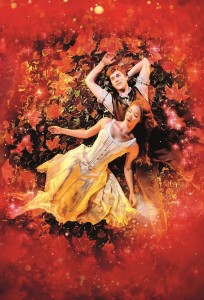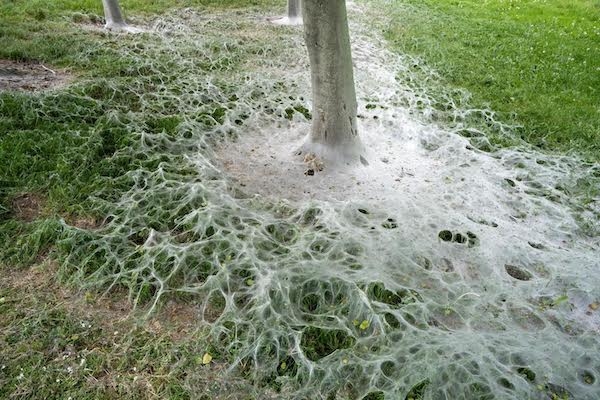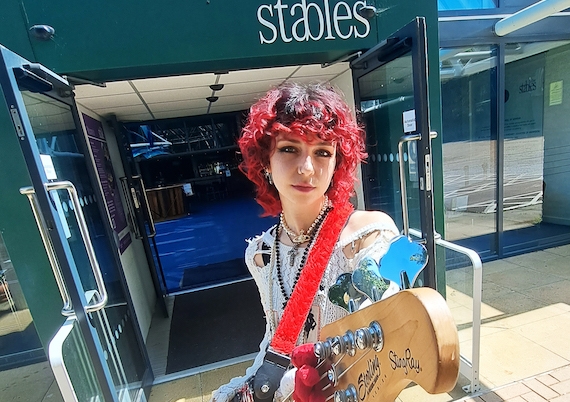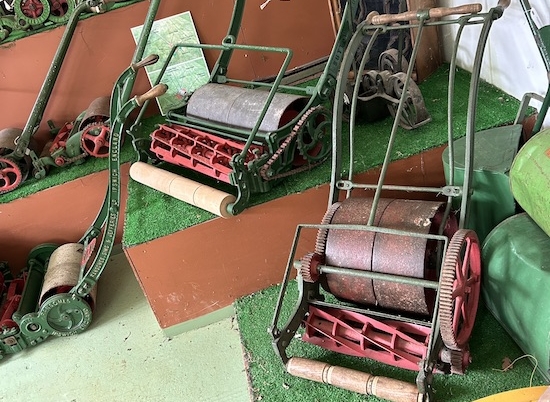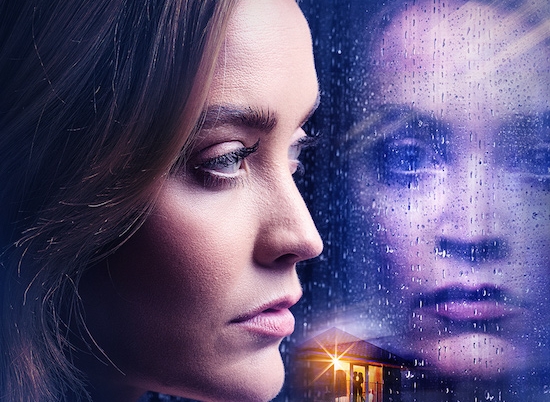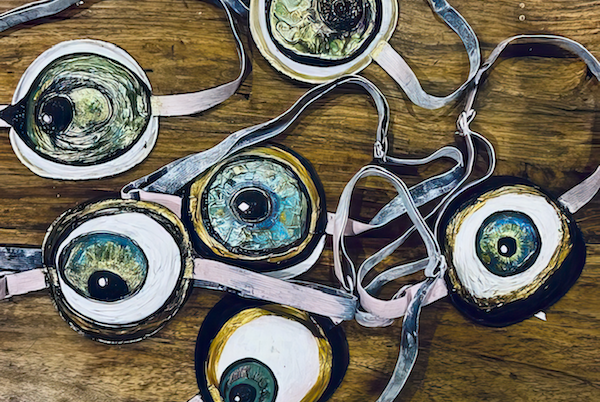Once upon a time, Matthew Bourne created a vamped-up adaptation of Sleeping Beauty for his innovative company, New Adventures, devised to wake audiences up to the charms of contemporary dance theatre.
Premiered in 2012, the production proved to be a gothic fairy tale that dance aficionados and newcomers alike could really get their teeth into.
This week, having been roused from its slumber for a second nationwide tour, this enthralling interpretation of a much-loved classic is once again casting its spell over visitors to Milton Keynes Theatre.
As a choreographer, Matthew Bourne has always been one who dares to dream, writes Georgina Butler.
This is, after all, the dazzlingly deviant dance-maker who gave us a deliciously different, Dickensian orphanage-set Nutcracker; not to mention a Swan Lake featuring a menacing male ensemble which initially ruffled a few feathers among ballet purists. It was certainly no mean feat to overhaul these iconic ballets in a totally new movement style!
Bourne’s re-imagining of Sleeping Beauty (which is perhaps the ultimate classical ballet thanks to its glorious score, tutu-clad fairies and abundance of virtuoso dancing) came about as a way of celebrating New Adventures’ 25th birthday. Its inclusion in the company’s repertoire made Bourne’s dream of completing Tchaikovsky’s trilogy of ballet masterworks - in his own inimitable manner - a reality.
Sleeping Beauty has returned to Milton Keynes Theatre straight from an eight-week stint at Sadler’s Wells, London’s dance house and the company is still revelling in Matthew Bourne’s Knighthood for services to dance in the Queen’s 2016 New Year Honours List.
What’s more, just to add to Sir Bourne’s recent acclaim, New Adventures waltzed off with the Stef Stefanou Award for Outstanding Company at the Critics' Circle National Dance Awards for 2015 on Monday.
Sharp storytelling and clever characterisation are what underpin Bourne’s success. Significantly, the movement vocabulary he employs is used first and foremost to relay a tale, express emotion and portray the personalities of his central players.
His idiosyncratic Sleeping Beauty is a contemporary take on a treasured age-old fairy tale and, no matter how familiar I become with the weird but wonderful changes he has made to the narrative, I always find myself completely immersed in his spellbinding scenario.
Bourne’s Princess Aurora is born in 1890 (at the time of the classical ballet’s creation), comes of age in the Edwardian summer of 1911 and awakens after her Century-long snooze in the present day.
This timeline sets the scene for a fashionable array of striking period costumes, while also presenting opportunities for the New Adventures troupe to demonstrate their versatility in a variety of dance styles. With witty nods to classical ballet’s affectations in the fairies’ variations; a regally restrained Edwardian waltz section; sections of spirited, emotive dancing between Aurora and her love interest; and a rambunctious, ritualistic routine when Aurora is about to be wed (though not necessarily to the right suitor) – the production is packed full of dance.
As with all of Bourne’s shows, Sleeping Beauty has humour, drama, intrigue and magic woven throughout.
From the moment that King Benedict and Queen Eleanor are presented with a much-longed-for baby daughter by dark fairy Carabosse, it is clear that something supernatural must be at work and parenthood will not be straightforward for the couple.
Bourne’s Aurora is a wild-child who grows into a strong-willed young woman. In contrast to the classical ballet (in which the new-born royal remains safely ensconced in her cradle while events take a turn for the worse), Bourne’s Aurora character makes her first appearance on-stage as a wayward infant. Skilful puppetry means baby Aurora crawls, cries, climbs and creates chaos in the attention-grabbing first scene.
The tale of Sleeping Beauty is, of course, fundamentally about good versus evil. Bourne’s version is no different and his Carabosse, affronted that the King and Queen have not shown her sufficient gratitude for providing them with a little one to love, declares that the child will one day prick her finger and fall down dead.
In lieu of a benevolent Lilac Fairy, Bourne has a Count Lilac who mitigates the curse so that the princess will not die. Instead, she will fall into a deep sleep.
For those of us who are familiar with vampire lore, this character’s name offers some suggestion as to how he also helps ensure that her one true love can be preserved through the years so as to be by her side to wake her up…
Bourne ensures that Carabosse’s malice endures by introducing a menacing and faithful son (Caradoc) who sticks around long after his mother’s demise to ensure that her wicked curse comes to pass. His advances towards Aurora at her 21st birthday party add a very real sense of danger and dramatic tension to the tale, balancing out the sweetly blossoming romance between the princess and Leo, the Royal Gamekeeper.
Principal dancer Ashley Shaw is positively radiant as Princess Aurora.
She exudes youthful exuberance, demonstrating both grace and athleticism in Bourne’s lively choreography. Her movements and demeanour effortlessly communicate all the “I’ll do as I like” attitude needed to portray the unconventional princess’s feisty defiance – yet Shaw still manages to convince as a gauche young girl on the cusp of womanhood who is enjoying the first flush of love.
And her ability to go limp and lifeless on command is admirable.
Dominic North is equally capable as Leo, the Royal Gamekeeper.
Whether throwing out multiple pirouettes or contorting his way through contemporary floor routines, North endears himself to the audience. Leo is a simple commoner who woos the rebellious royal and finds his whole world turned upside down when he time travels through the years to resume his romance with Aurora.
Expressing – in fact, embodying - all the pain, sorrow and confusion of the boyfriend left behind to mourn his girlfriend’s temporary (albeit long-term) loss, North’s performance on opening night sustained his credentials as one of Matthew Bourne’s most popular dancer-actors.
Aurora and Leo’s section to The Rose Adagio is wonderful.
The music swells to such stunning crescendos and is so very associated with the classical Sleeping Beauty that Bourne could not possibly have left it out but attempting to replicate the balletic approach to this part of the score would never have worked either.
His use of the music for a playful duet between a besotted Aurora and Leo (during which they roll on and off of a park bench, furtively looking at each other over shoulders and through lowered lashes as they perch side by side, edging closer and closer before dancing freely across the garden) is delightfully character-driven.
The movements – and the artists themselves - emote blissful happiness, which is what ultimately makes this segment a joy to watch (and, I’d imagine, a joy to dance!).
Another dance highlight for me was the pas de six for the fairies and their kooky solo variations.
All of these gothic-costumed, winged creatures have a touch of the vampire about them but they each represent some element of goodness which they bestow upon the Baby Aurora (just like in the classical ballet versions). Bourne’s fairies are named Ardor, the Fairy of Passion; Hibernia, the Fairy of Rebirth; Autumnus, the Fairy of Plenty; Feral, the Fairy of Spirit; Tantrum, the Fairy of Temperament; and Count Lilac, King of the Fairies. Autumnus and Tantrum are male fairies and dancers Jack Jones and Liam Mower powered through their dynamic dance content with noteworthy verve in the cast I saw.
The dancing when Carabosse’s wicked curse is foretold is particularly mesmerising as the faceless future princess is escorted on-stage alongside her masked prospective beau and their fate seems sealed.
Of course, fortunately, Count Lilac soon intervenes. Similarly, the drama of blindfolded dancers in the Land of the Sleepwalkers exemplifies Bourne’s yearning to involve audiences in a powerful theatrical experience.
Everyone adores a happy ending and the true love’s kiss reunion at the end of this production is guaranteed to raise a smile and make your heart soar.
Offering entertaining escapism which is based on a cherished classic fairy tale and includes plenty of dancing, Matthew Bourne’s Sleeping Beauty ensures that all theatregoers leave happily ever after…
> Matthew Bourne's 'Sleeping Beauty' continues at Milton Keynes Theatre until Saturday 30th January. Call the Box Office on 0844 871 7652 or visit www.atgtickets.com/miltonkeynes.
By Georgina Butler
For more dance and theatre reviews, news, features and interviews by Georgina visit http://georginabutler.wordpress.com and follow her on Twitter @GeorginaLButler.


